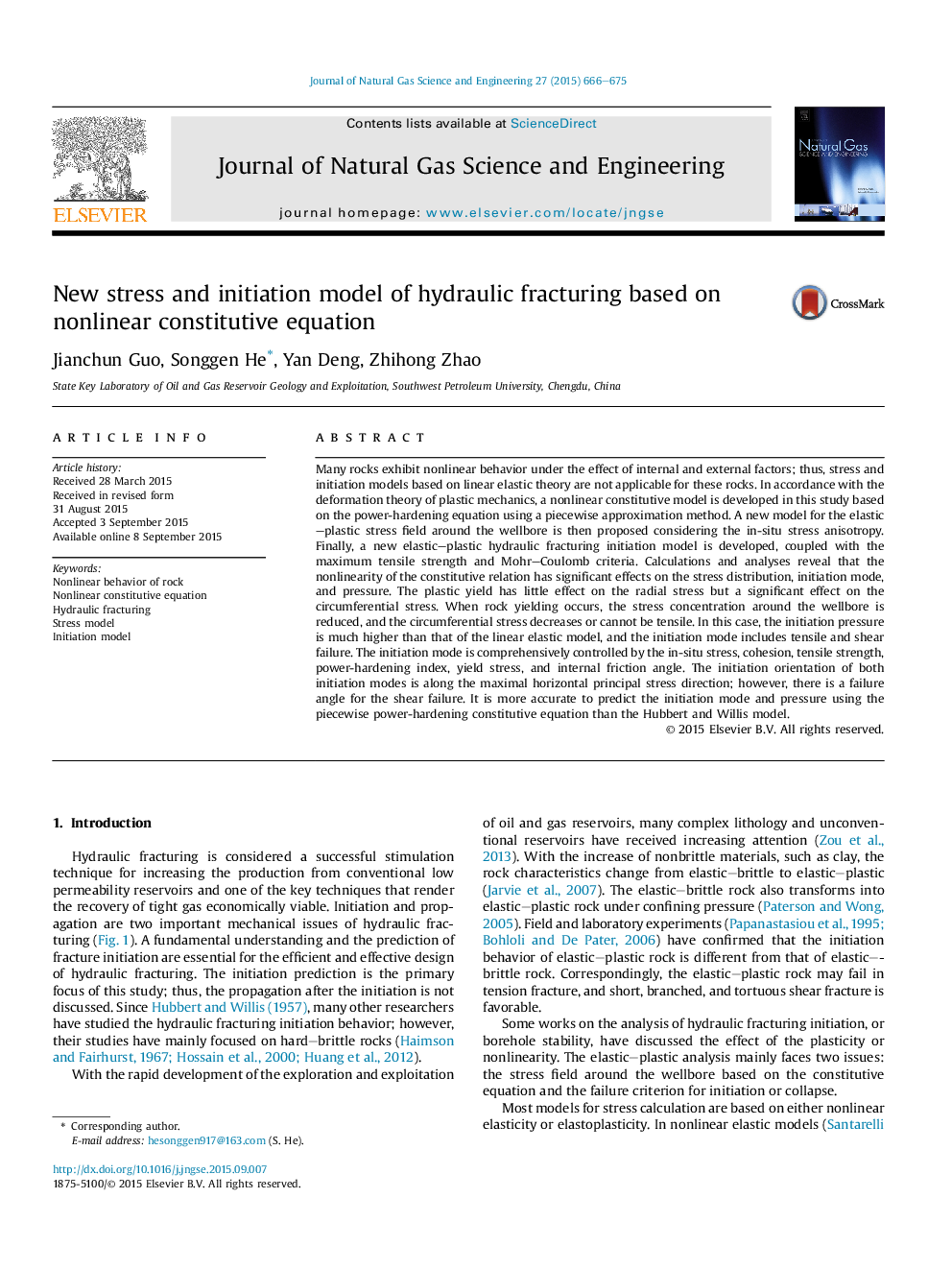| Article ID | Journal | Published Year | Pages | File Type |
|---|---|---|---|---|
| 1757616 | Journal of Natural Gas Science and Engineering | 2015 | 10 Pages |
Many rocks exhibit nonlinear behavior under the effect of internal and external factors; thus, stress and initiation models based on linear elastic theory are not applicable for these rocks. In accordance with the deformation theory of plastic mechanics, a nonlinear constitutive model is developed in this study based on the power-hardening equation using a piecewise approximation method. A new model for the elastic–plastic stress field around the wellbore is then proposed considering the in-situ stress anisotropy. Finally, a new elastic–plastic hydraulic fracturing initiation model is developed, coupled with the maximum tensile strength and Mohr–Coulomb criteria. Calculations and analyses reveal that the nonlinearity of the constitutive relation has significant effects on the stress distribution, initiation mode, and pressure. The plastic yield has little effect on the radial stress but a significant effect on the circumferential stress. When rock yielding occurs, the stress concentration around the wellbore is reduced, and the circumferential stress decreases or cannot be tensile. In this case, the initiation pressure is much higher than that of the linear elastic model, and the initiation mode includes tensile and shear failure. The initiation mode is comprehensively controlled by the in-situ stress, cohesion, tensile strength, power-hardening index, yield stress, and internal friction angle. The initiation orientation of both initiation modes is along the maximal horizontal principal stress direction; however, there is a failure angle for the shear failure. It is more accurate to predict the initiation mode and pressure using the piecewise power-hardening constitutive equation than the Hubbert and Willis model.
